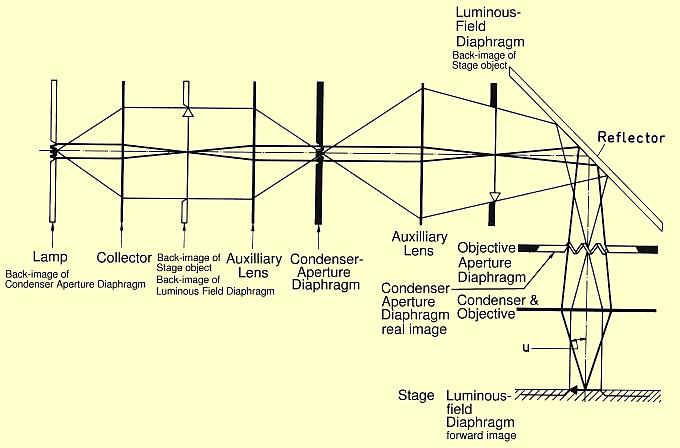
Reflected-light, normal bright-field illumination with glass-plate reflector
Figure from "Microscope Photometry", H. Piller, Springer, ISBN 3-540-08094-5

The illumination beam-path for "ordinary" bright-field illumination. In epi-illumination (illumination from above the specimen) there is no separate condenser. Instead the objective is acting as condenser. Because of this a special trick has to be made to introduce the Aperture Stop, here called Condenser Aperture Diaphragm (CAD).
Two auxiliary lenses are used to produce a real image of the CAD in the plane of the Objective Aperture Diaphragm (OAD). In this way a "virtual" diaphragm that is variable is put in the plane of the fixed OAD. Thus the illuminating cone of light can be matched to the cone of light from each sample point. Usually the illuminating cone should be slightly narrower for best resolution and contrast.
The Field Stop, here called the Luminous Field Diaphragm (LFD), is used to set the size of the illuminated field of the sample.
The reflector is a semi-transparent glass-plate, the eye-piece and the eye of the operator is straight above the reflector (not shown).